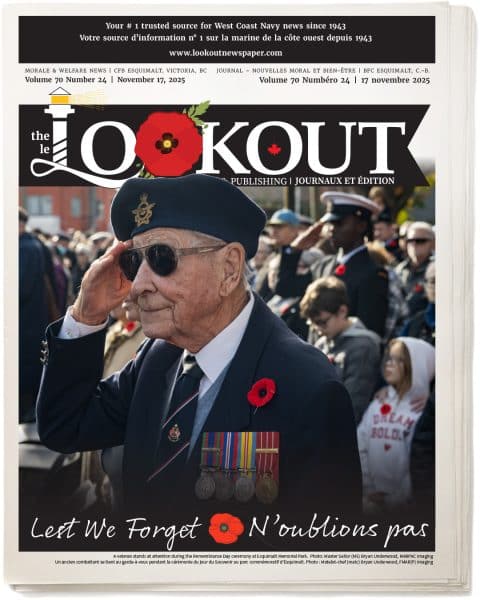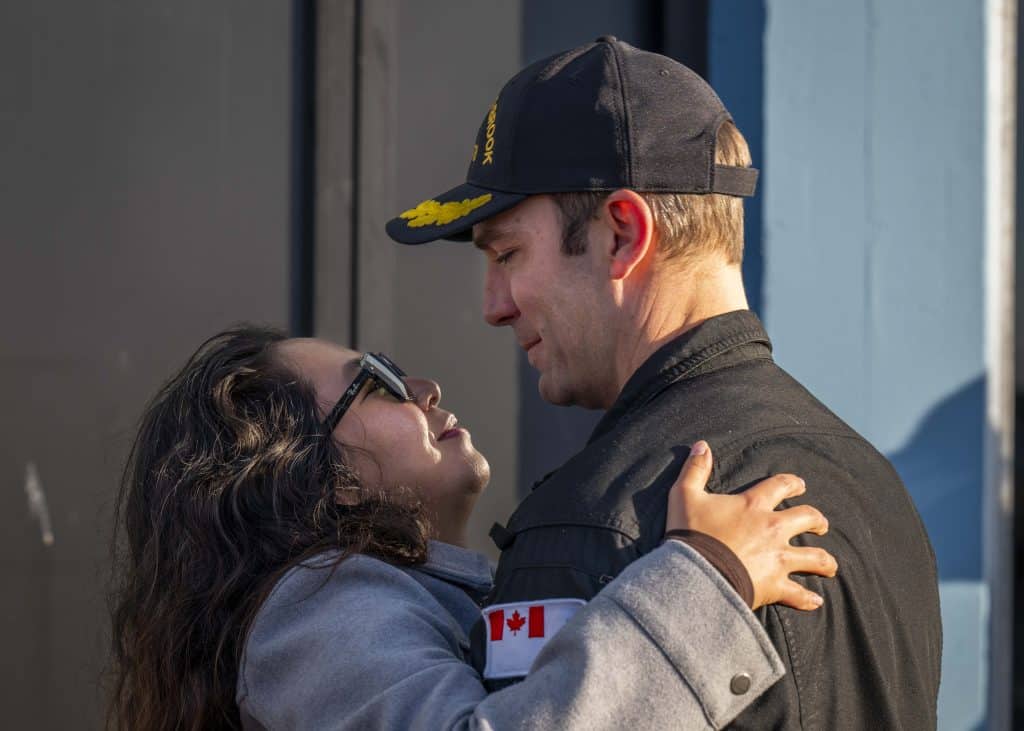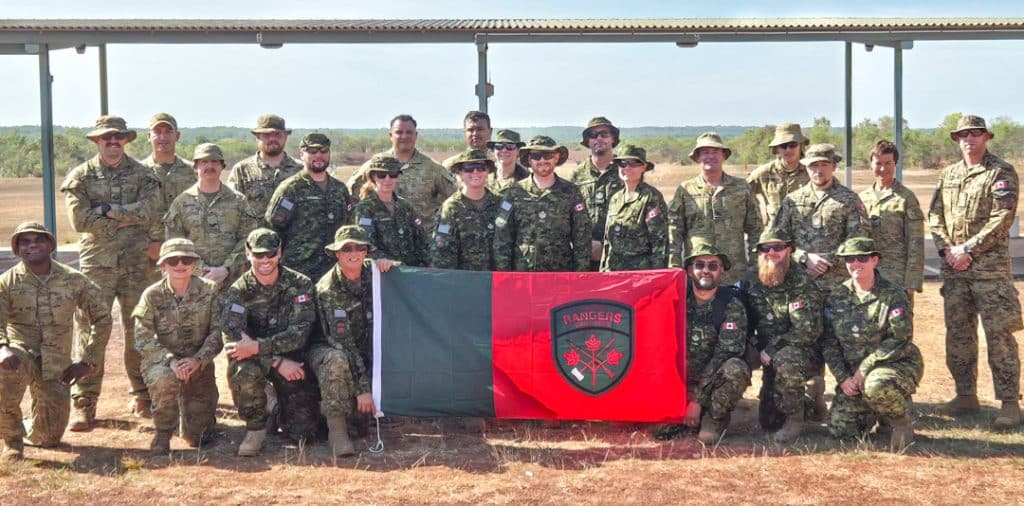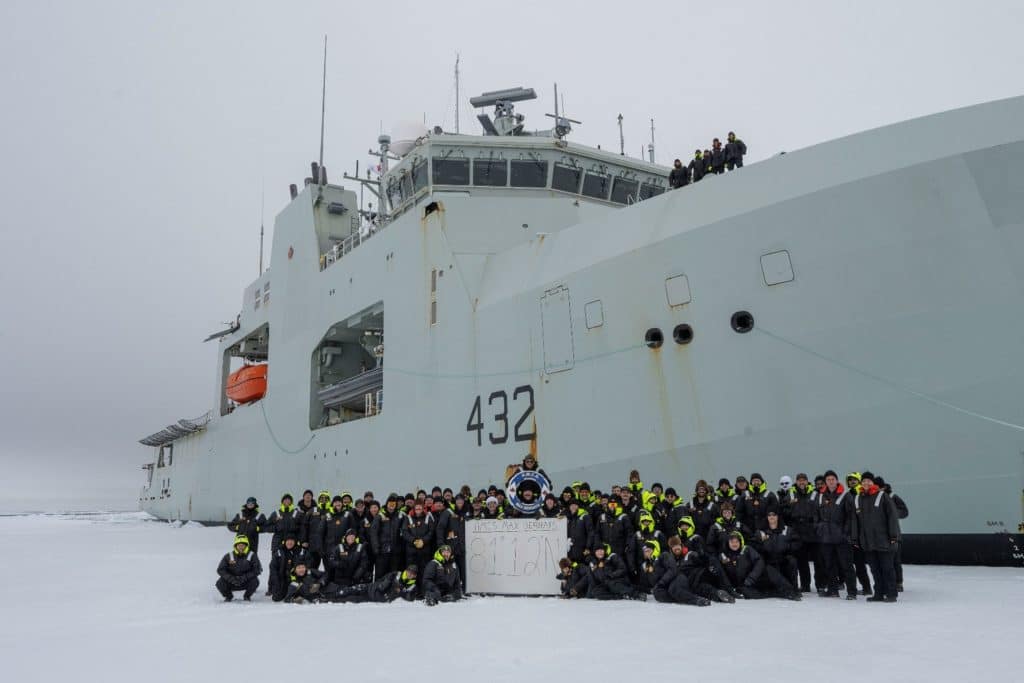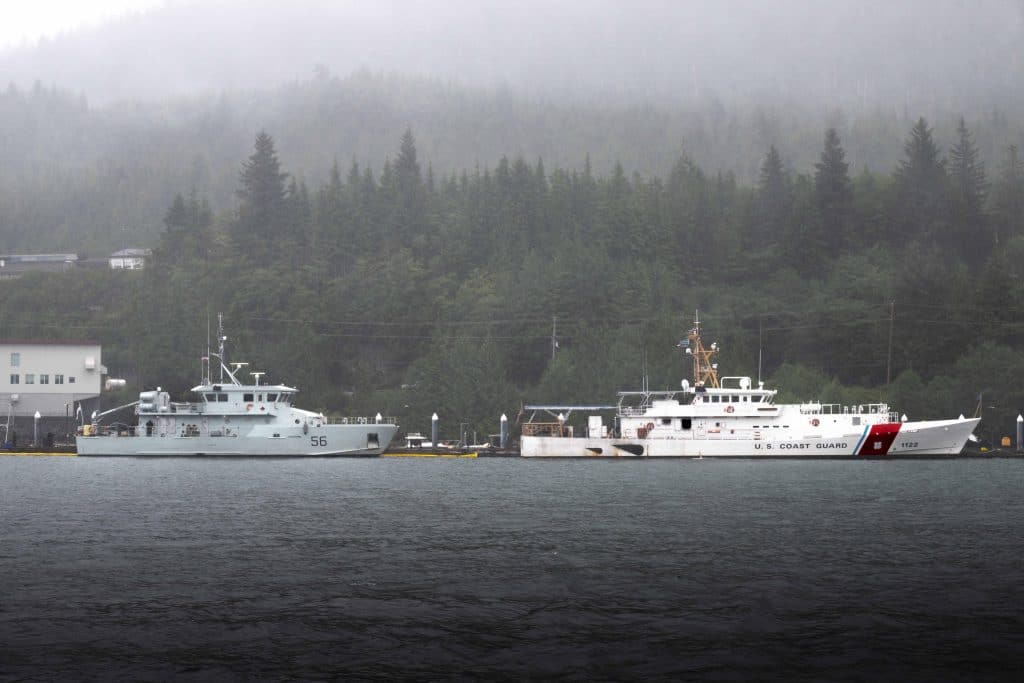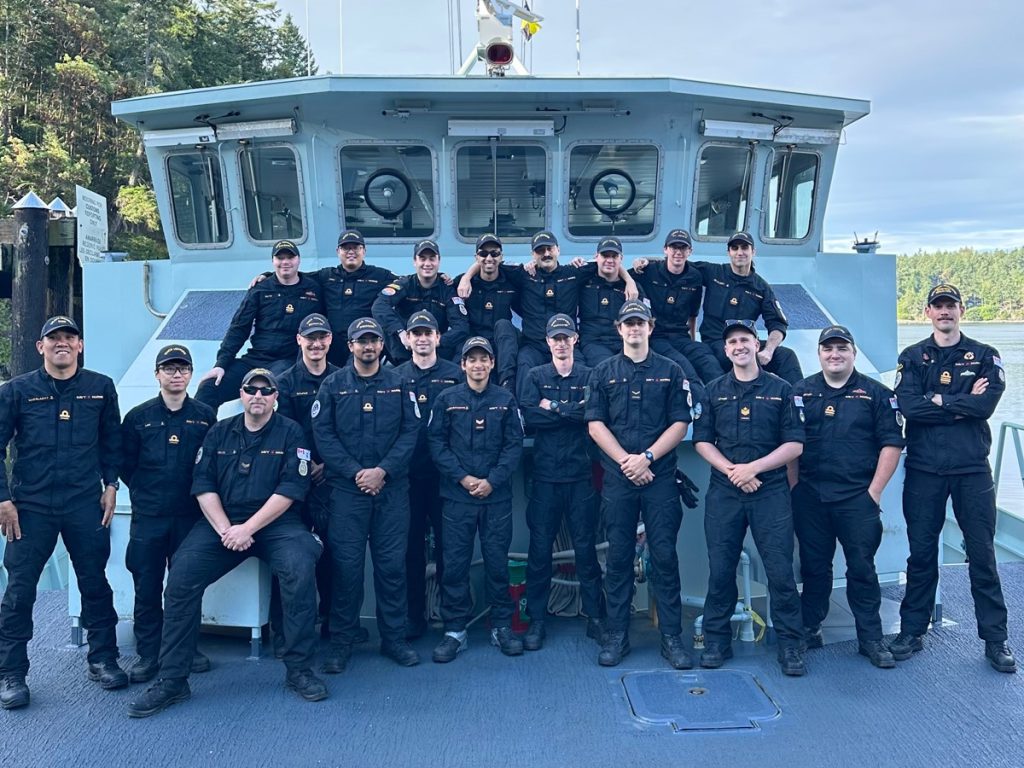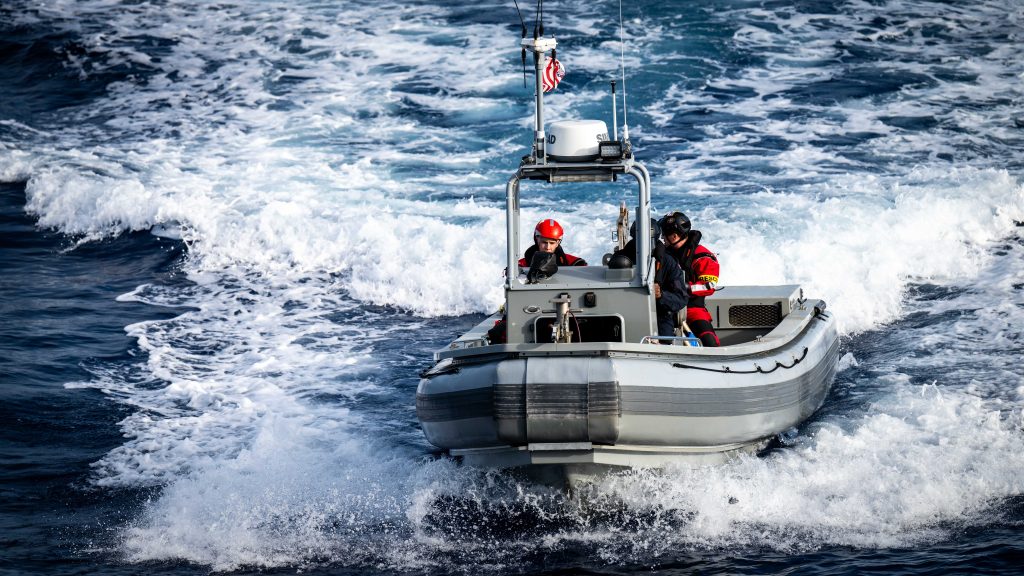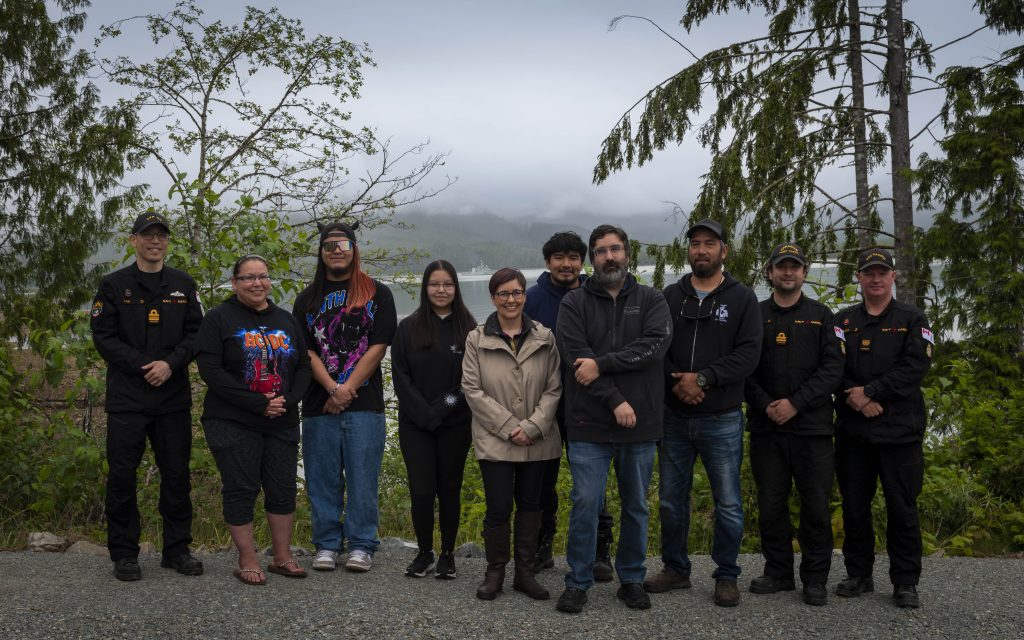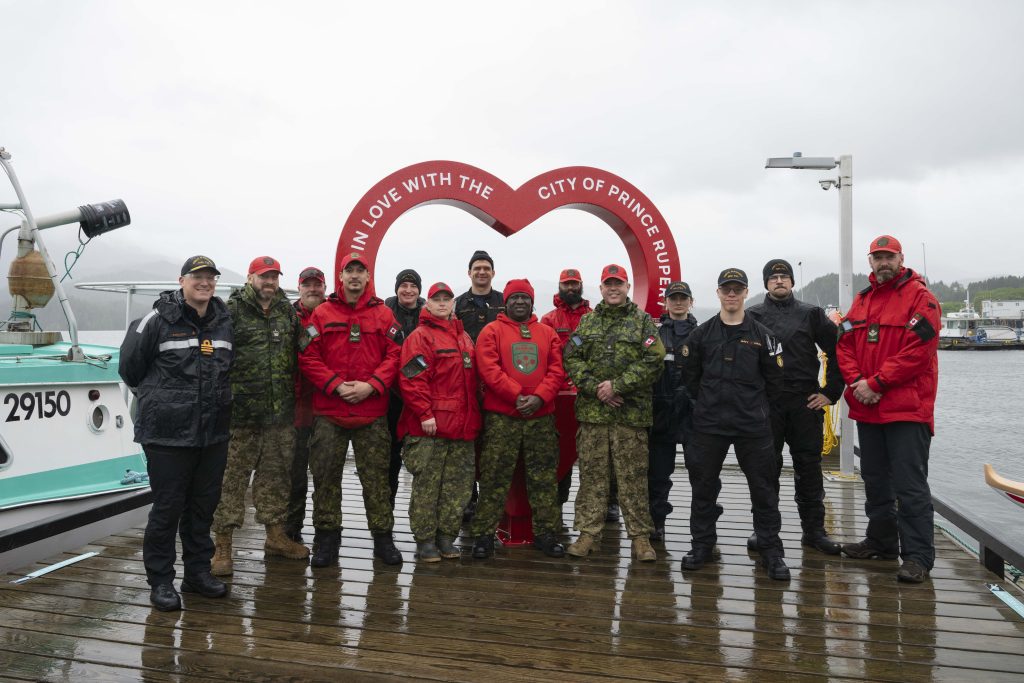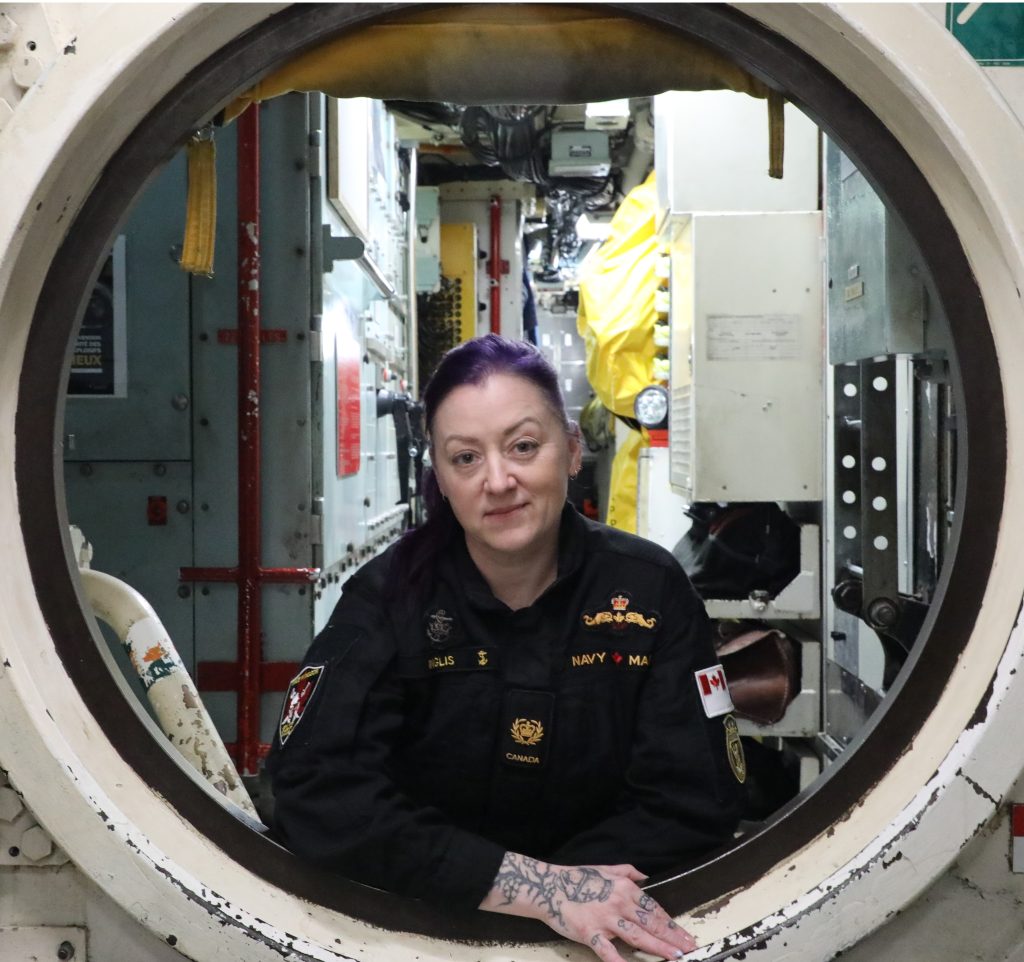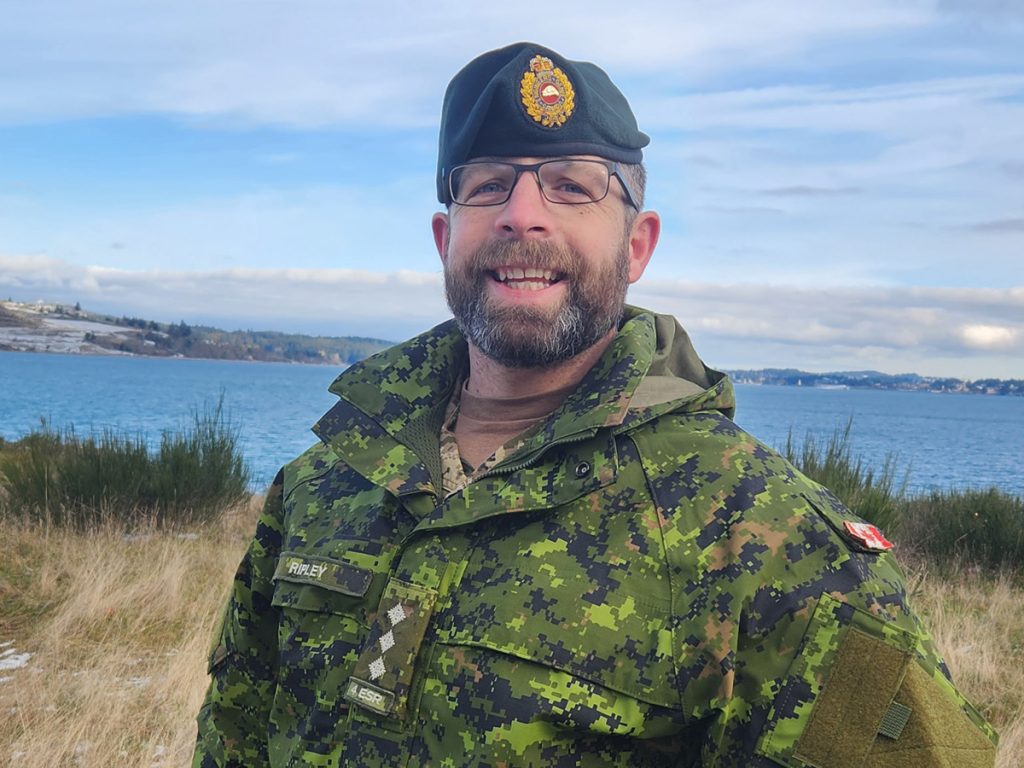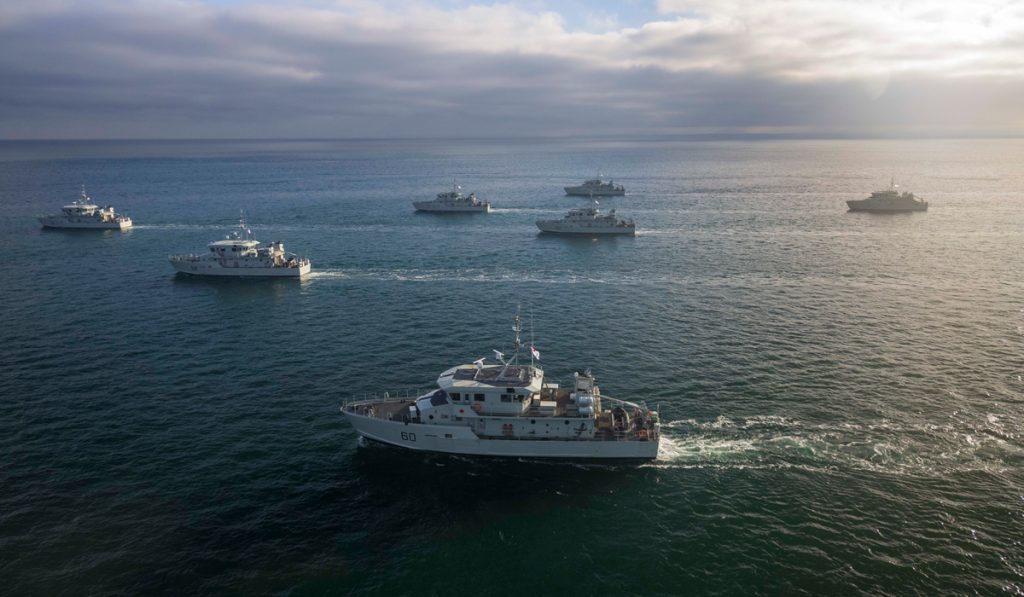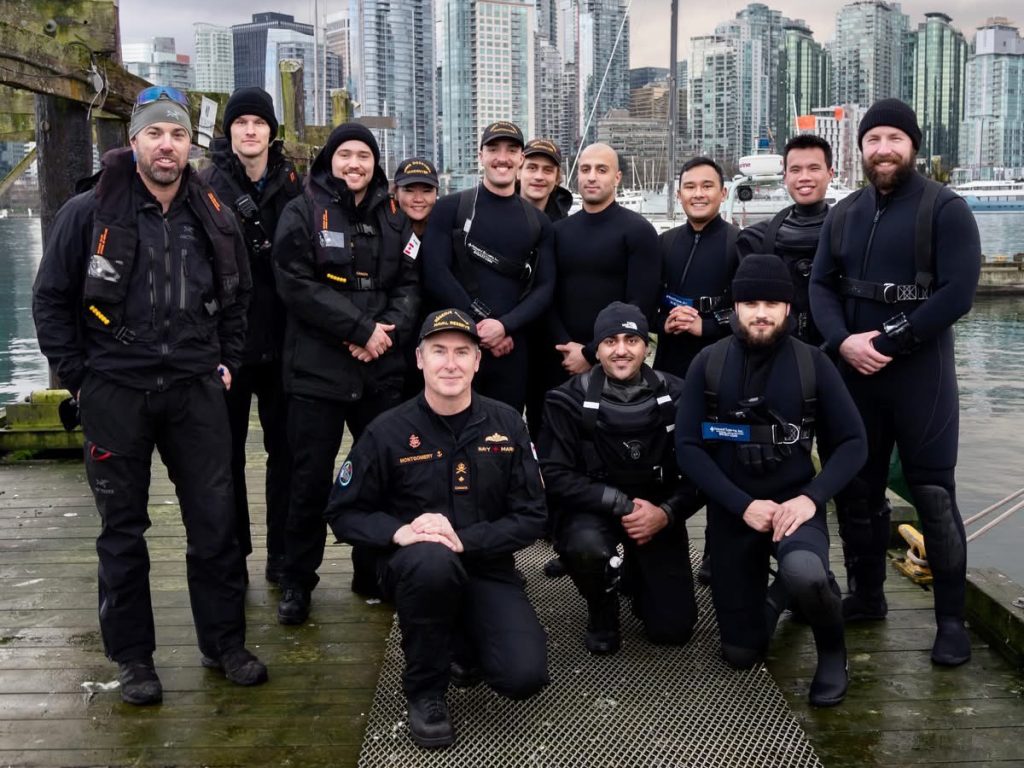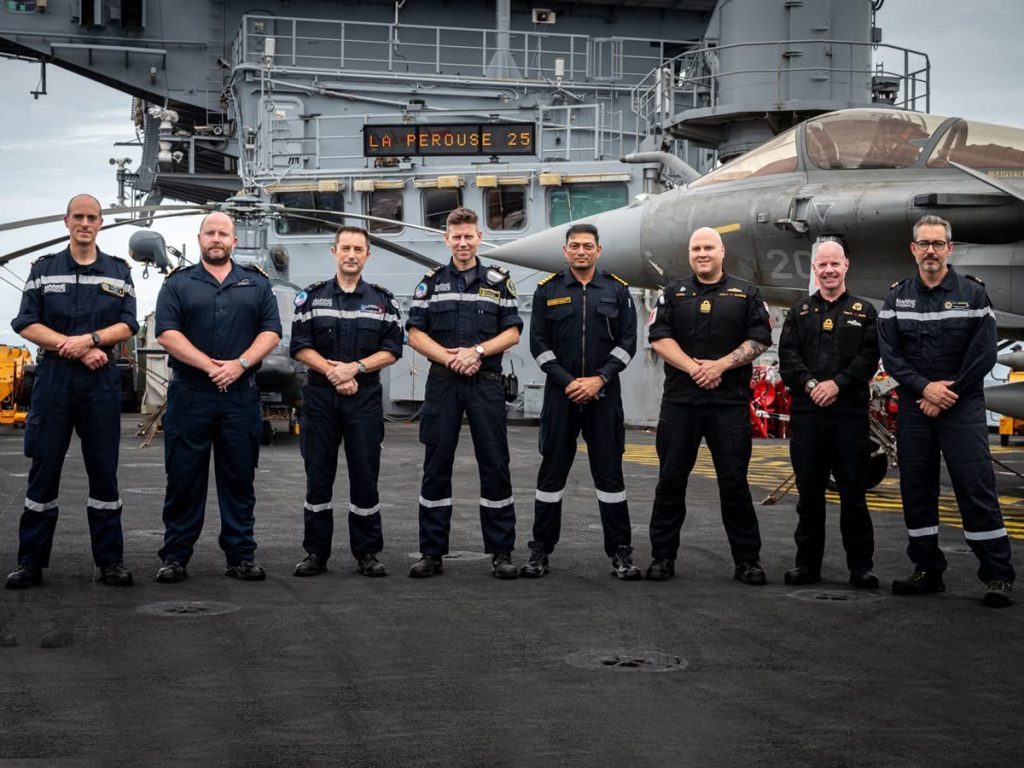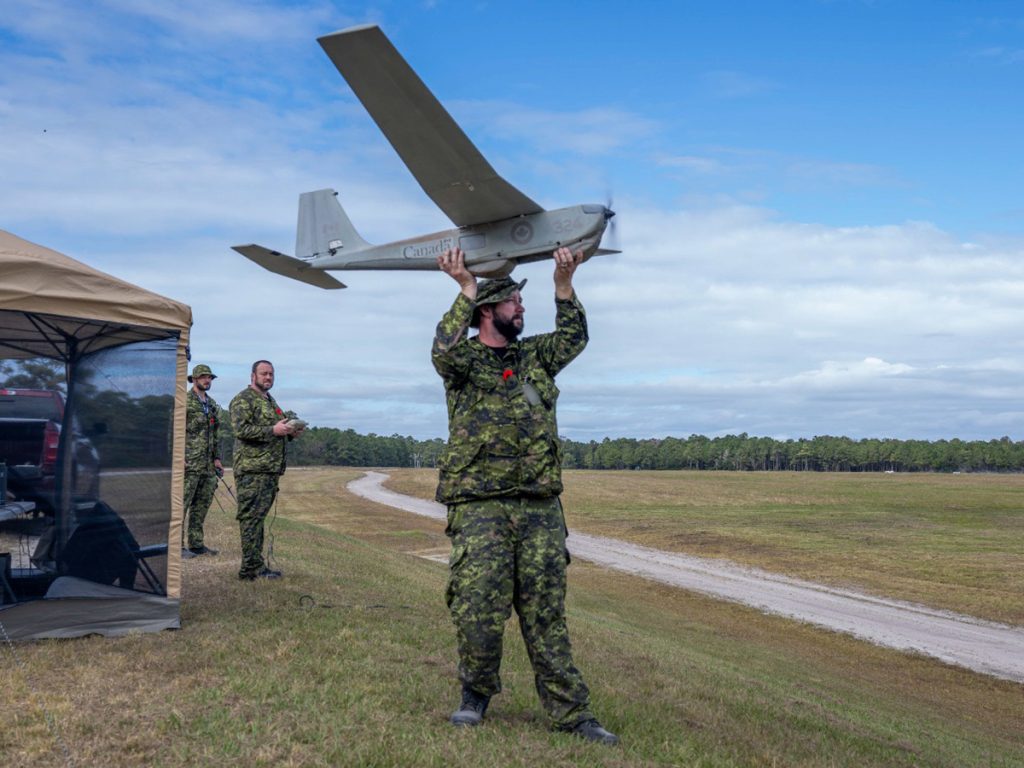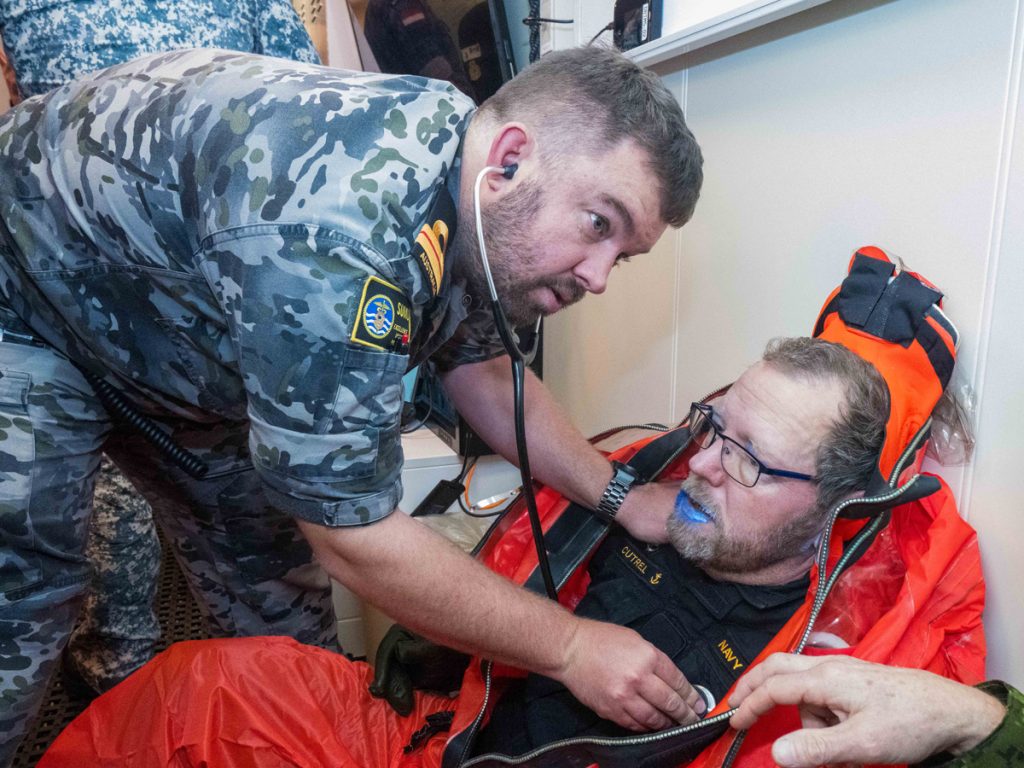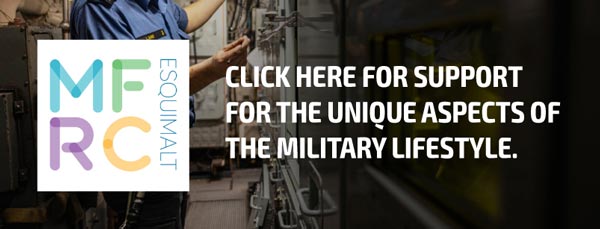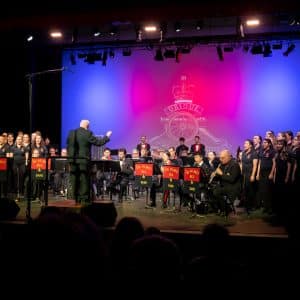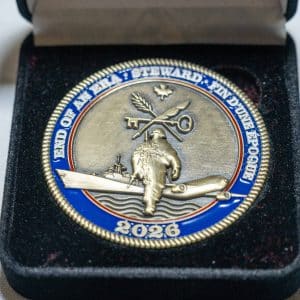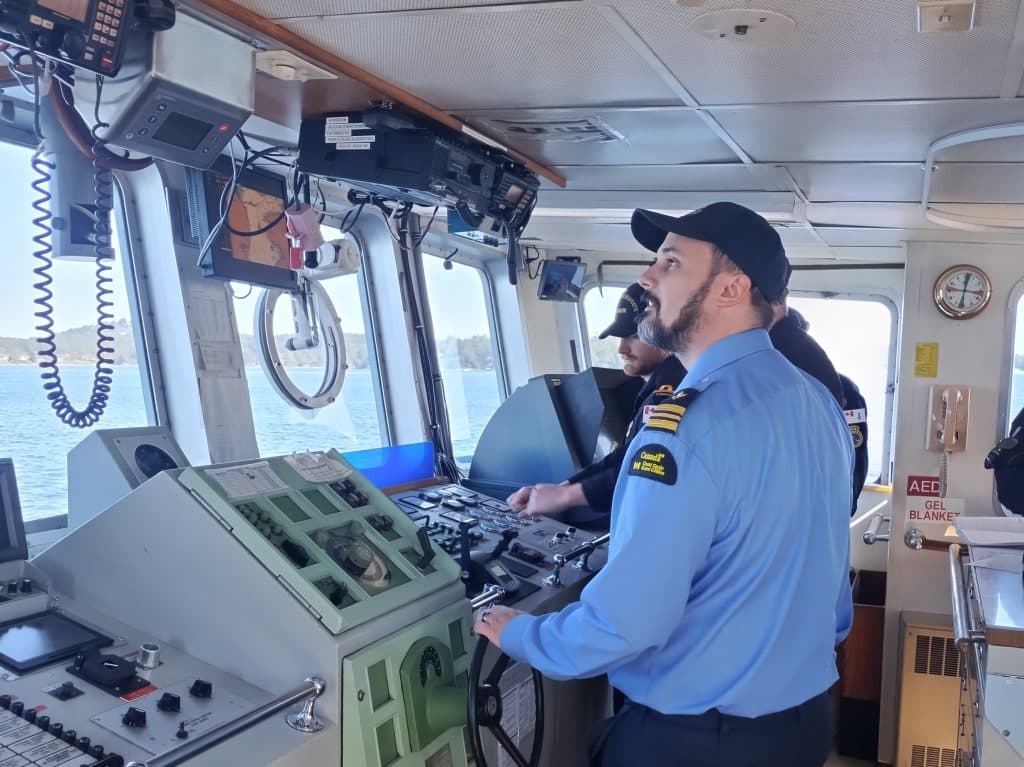
FDU(P) Supports Officer Development at Sea
Lt(Navy) Michael Cormie, FDU(Pacific) Fleet Diving Unit(Pacific) hosted a two-week sea training aboard YDT Sooke to help junior Naval Warfare Officers complete bridge watch hours. The voyage offered hands-on ship-handling experience, teamwork with the Canadian Coast Guard, and exposure to naval operations. - Fleet Diving Unit(Pacific) (FDU[P]) is dedicated to supporting the Canadian fleet, but from Sept 22 to Oct 3, the team took that mission to a new level. Sailing aboard Yard Dive Tender (YDT) Sooke, members of FDU(P) provided junior Naval Warfare Officers (NWOs) currently working towards completing their 600 bridge watch hours with hands-on experience with atypical fleet platforms. While on watch, the junior NWOs strengthened their bridge watchkeeping abilities, gaining confidence as professional mariners at sea. First built in 1990 to support range operations in Nanoose, Sooke was modified in the late 1990s to better support diving missions. Typically used by clearance divers, the Canadian Armed Forces’ (CAF) experts in route clearing and mine countermeasures, Sooke usually carries a crew of 12. For this sail, capacity increased to 18 with aid from FDU(P)’s engineering department and Fleet Maintenance Facility (FMF) Cape Breton members. To achieve this, a repurposed sea container, or an ‘accommodation pod,’ was installed on the deck space normally utilized for the Containerized Diving System recompression chamber. Six newly promoted SubLieutenants (SLts) joined Sooke for the two-week sail, developing navigation, seamanship, and ship-handling skills. This included a rare chance for the SLts to manually steer the vessel during both departures and drills. “This was a great event, with fantastic training quality. It allowed us to build skills and work towards our NWO 600 hours,” said SLt Conal Evans, originally from Vernon, British Columbia (B.C.). “It was an excellent opportunity to consolidate the skills I’ve learned and to develop myself as a bridge watchkeeper.” The...
